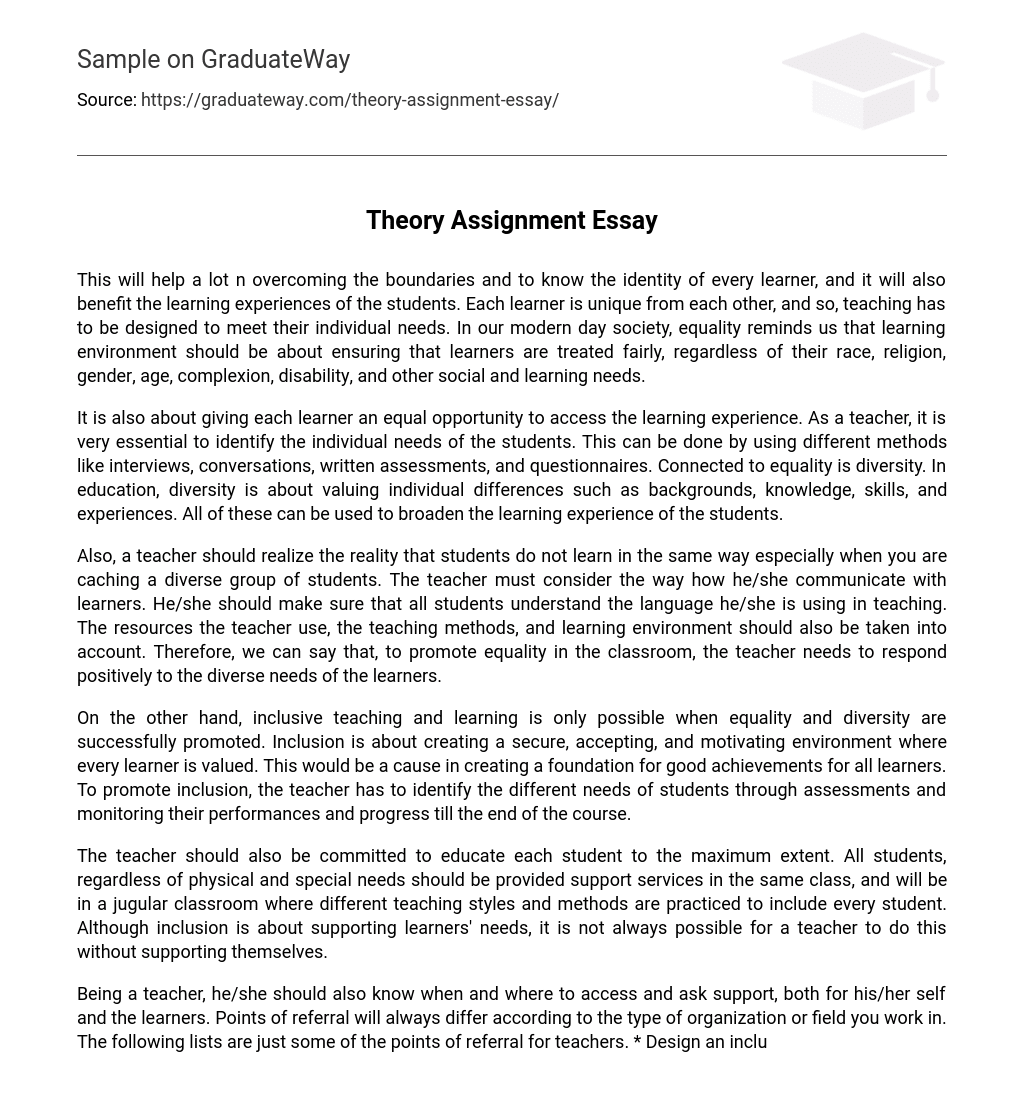This will help a lot n overcoming the boundaries and to know the identity of every learner, and it will also benefit the learning experiences of the students. Each learner is unique from each other, and so, teaching has to be designed to meet their individual needs. In our modern day society, equality reminds us that learning environment should be about ensuring that learners are treated fairly, regardless of their race, religion, gender, age, complexion, disability, and other social and learning needs.
It is also about giving each learner an equal opportunity to access the learning experience. As a teacher, it is very essential to identify the individual needs of the students. This can be done by using different methods like interviews, conversations, written assessments, and questionnaires. Connected to equality is diversity. In education, diversity is about valuing individual differences such as backgrounds, knowledge, skills, and experiences. All of these can be used to broaden the learning experience of the students.
Also, a teacher should realize the reality that students do not learn in the same way especially when you are caching a diverse group of students. The teacher must consider the way how he/she communicate with learners. He/she should make sure that all students understand the language he/she is using in teaching. The resources the teacher use, the teaching methods, and learning environment should also be taken into account. Therefore, we can say that, to promote equality in the classroom, the teacher needs to respond positively to the diverse needs of the learners.
On the other hand, inclusive teaching and learning is only possible when equality and diversity are successfully promoted. Inclusion is about creating a secure, accepting, and motivating environment where every learner is valued. This would be a cause in creating a foundation for good achievements for all learners. To promote inclusion, the teacher has to identify the different needs of students through assessments and monitoring their performances and progress till the end of the course.
The teacher should also be committed to educate each student to the maximum extent. All students, regardless of physical and special needs should be provided support services in the same class, and will be in a jugular classroom where different teaching styles and methods are practiced to include every student. Although inclusion is about supporting learners’ needs, it is not always possible for a teacher to do this without supporting themselves.
Being a teacher, he/she should also know when and where to access and ask support, both for his/her self and the learners. Points of referral will always differ according to the type of organization or field you work in. The following lists are just some of the points of referral for teachers. * Design an inclusive curriculum. * Engage learners actively. Design lessons that include realistic and achievable expectations, allowing students of different abilities to work at different levels on different activities.
Follow the twenty minutes cycle, where the teacher delivers teaching and hands out activities. * One to one learning or homework. * Allow visual, audio or recording aids. * Provide following week’s course work (allowing more time to research) * Allowing learners to leave the room when required. * Emphasize the value of social interaction. * Relate academic content to student’s environment and experience. * Offer opportunities to apply their learning.





